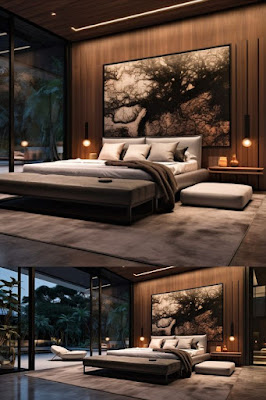Illuminating Moods: The Impact of Lighting Temperature on Your Interior Spaces
Introduction:
In the realm of interior design, lighting serves as a powerful tool that extends far beyond mere illumination. The temperature of light, measured in Kelvins (K), can significantly influence the mood, ambiance, and overall atmosphere of a space. In this blog post, we will delve into the fascinating world of lighting temperature and its profound impact on our emotions and well-being.
Understanding Lighting Temperature:
Lighting temperature refers to the color appearance of light emitted by a source. It is commonly measured on the Kelvin scale, with lower values representing warmer, yellow tones and higher values indicating cooler, blue tones. The two primary categories are warm light (ranging from 2700K to 3000K) and cool light (ranging from 4000K to 6500K).
Warm Light for Cozy Comfort:
1. Creating Intimate Spaces:
Warm light, reminiscent of the golden hues of sunrise or sunset, tends to evoke feelings of coziness and intimacy. Consider using warm lighting in bedrooms, living rooms, or any area where a relaxed and inviting atmosphere is desired.
2. Enhancing Relaxation:
Warm lighting is often associated with relaxation and can contribute to creating a soothing environment. This makes it an excellent choice for spaces designated for unwinding, such as reading nooks or meditation corners.
Cool Light for Focus and Productivity:
1. Boosting Alertness:
Cool light, with its blue and white tones, is known for promoting alertness and concentration. Consider incorporating cool lighting in home offices, kitchens, or areas where tasks requiring focus and productivity are performed.
2. Creating Dynamic Spaces:
Cool light can be used to create a sense of freshness and vibrancy in a space. It works well in areas where an invigorating and energetic ambiance is desired, such as workout spaces or creative studios.
Balancing Act – The Importance of Layered Lighting:
While understanding the impact of lighting temperature is crucial, achieving the perfect balance is an art. Layered lighting, which combines ambient, task, and accent lighting, allows for customization based on specific activities and moods.
1. Ambient Lighting:
This serves as the base layer, providing overall illumination to the space. Consider warm ambient lighting for living areas and cooler tones for spaces where alertness is crucial.
2. Task Lighting:
For areas where specific activities take place, such as reading or cooking, task lighting can be tailored to the desired lighting temperature. Adjustable fixtures or smart lighting solutions offer flexibility.
3. Accent Lighting:
Accent lighting adds depth and visual interest. Experiment with different lighting temperatures to highlight architectural features, artwork, or focal points in the room.
Conclusion:
As we navigate the complexities of interior design, let us not underestimate the transformative power of lighting temperature. By carefully selecting and combining warm and cool lighting tones, we have the ability to shape the mood and atmosphere of our living spaces, creating environments that cater to our emotional well-being and enhance our overall quality of life. Illuminate your world thoughtfully and watch as the subtle dance of light transforms your home into a haven of comfort, productivity, and joy.







Comments
Post a Comment